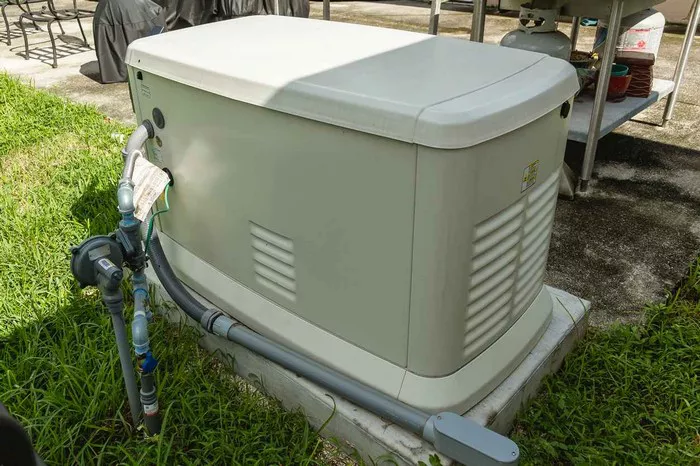The generator market across the Middle East and Africa (MEA) is on a strong growth trajectory, fueled by infrastructure expansion, industrial development, and rising power outages. Valued at approximately $3.4 billion in 2024, the market is projected to reach $4.7 billion by 2031, growing at a compound annual growth rate (CAGR) of 4.6%, according to industry forecasts.
The region’s generator demand spans both sales and rentals, serving residential, commercial, and industrial needs. From construction projects and manufacturing sites to telecom towers and emergency energy supplies, generators are becoming critical components of MEA’s energy infrastructure.
Surging Demand Amid Grid Instability
The MEA region, which includes the Gulf countries and sub-Saharan Africa, faces persistent challenges in power supply. Inconsistent electricity access has made backup generators essential for households and businesses alike. This need for reliable, uninterrupted power remains a primary driver of market growth.
Compounding this demand is the increasing impact of natural disasters, such as floods and extreme weather, which frequently disrupt regional power grids. In response, many consumers and industries are investing in hybrid systems that combine traditional fuel-based generators with renewable sources like solar energy.
Gulf Nations Lead Market Expansion
The Gulf Cooperation Council (GCC) countries—particularly Saudi Arabia, the United Arab Emirates, and Qatar—represent the most active markets in the region. Massive infrastructure projects, supported by national visions like Saudi Vision 2030, continue to spur demand for dependable power solutions.
The oil and gas sector remains a major consumer of generator systems, requiring round-the-clock energy to support exploration and processing activities. Additionally, the rapid rollout of 5G networks across the Gulf has increased demand for telecom infrastructure, further boosting generator sales for backup power support.
South Africa, Nigeria Face Growing Power Needs
In sub-Saharan Africa, nations such as South Africa, Nigeria, and Egypt are driving demand due to ongoing grid reliability issues. In South Africa, chronic load shedding has made generator use a necessity, especially in the mining and industrial sectors. The country is expected to see a CAGR of 6.1% in generator sales through 2031.
These trends underscore the region’s need for scalable and high-capacity power systems to ensure business continuity and economic growth.
Market Breakdown
Fuel Type
Diesel generators remain the dominant choice in the MEA market, accounting for 56.2% of total market share in 2023. Their widespread use is tied to the availability of diesel fuel and the need for consistent, high-output power in sectors such as oil and gas, construction, and mining.
However, environmental regulations and rising fuel costs are pushing the market toward cleaner alternatives. Hybrid systems that incorporate solar energy, as well as bi-fuel generators that combine diesel with natural gas, are gaining traction—particularly in resource-rich countries like Saudi Arabia and Qatar.
Power Rating
Generators in the 2,500–5,000 kVA range are expected to see the fastest growth, with a projected CAGR of 6.2% through 2031. These large-capacity systems are critical for high-demand operations, including megaprojects and industrial zones in both North and sub-Saharan Africa.
As urbanization accelerates and new smart cities emerge, the demand for high-capacity, continuous power is set to rise sharply across the region.
Application
Standby generators remain the most widely used across MEA, ensuring power continuity during outages. From hospitals and schools to telecom towers and manufacturing facilities, standby systems are crucial to maintaining essential services.
The standby segment is forecast to grow at a 4.9% CAGR, reflecting a broad shift toward energy reliability across sectors.
Market Drivers
Rapid industrialization, urban development, and frequent grid failures are among the most prominent drivers of generator demand in MEA. Power reliability is essential for economic activity in industries like oil and gas, manufacturing, and telecommunications.
Additionally, the increasing frequency of extreme weather events continues to underline the importance of emergency backup systems. As cities expand and infrastructure becomes more complex, demand for reliable off-grid power is only expected to grow.
Market Challenges
Despite growth prospects, the MEA generator market faces headwinds. One of the primary challenges is tightening environmental regulations. Countries such as Saudi Arabia and the UAE are imposing stricter emission standards for diesel generators, increasing costs for manufacturers and distributors.
High upfront costs also pose a barrier, particularly for hybrid and bi-fuel systems. While these technologies promise long-term operational savings, the initial investment can be prohibitive for small businesses or underfunded regions.
Market Opportunities
Sustainability trends are opening new avenues in the MEA generator market. Hybrid generators, which integrate renewable energy with traditional systems, are becoming more popular as companies seek to cut emissions and operating costs. These systems are particularly attractive in remote areas, where access to stable grid power is limited.
Portable and inverter generators also present growing opportunities. Lightweight, fuel-efficient, and often quieter, these systems are ideal for off-grid locations, small enterprises, and temporary installations, including events and field operations.
As the MEA region continues its rapid transformation, the generator market is poised to play a central role in ensuring reliable power across critical sectors. From large-scale infrastructure and industry to residential and rural communities, generators remain essential to powering development in one of the world’s most dynamic regions.
Related topics:

